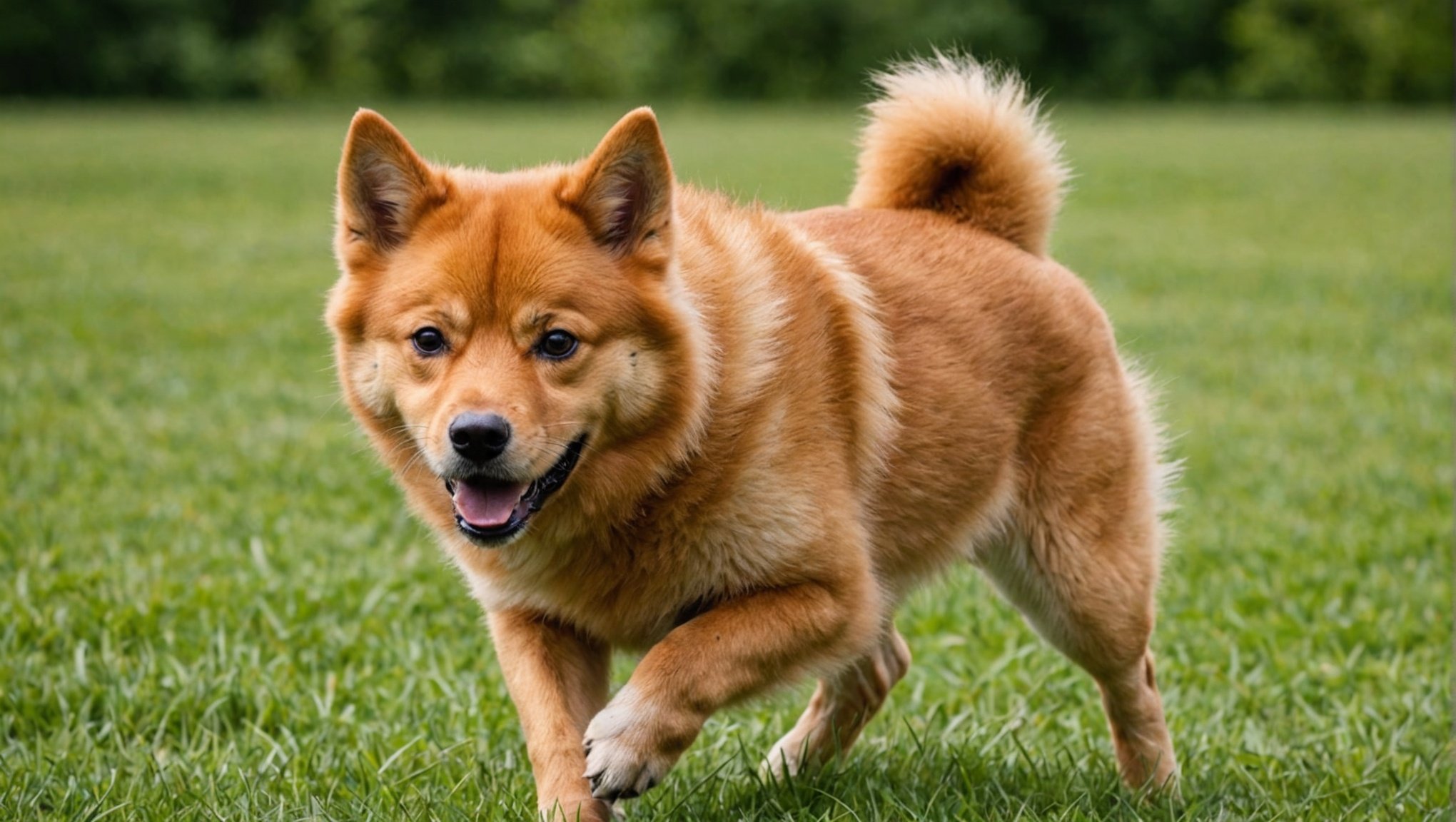Finnish Spitz dogs possess a remarkable prey drive, a trait that can be both a challenge and an opportunity during training. Effectively channeling this instinct is essential for fostering a harmonious relationship with your pet while enhancing obedience. With the right strategies, you can turn your dog’s hunting instincts into positive behaviors. This guide will explore practical techniques to transform that energy into focused training success, helping you and your Finnish Spitz thrive together.
Understanding Prey Drive in Finnish Spitz
The prey drive is an instinctual behavior in dogs, defined as the innate inclination to chase and capture prey. This drive plays a significant role in shaping a dog’s behavior and training needs. In the case of the Finnish Spitz, the prey drive is particularly pronounced, setting them apart from other breeds.
A découvrir également : Tackling Excessive Barking in Miniature Pinschers: Effective Strategies for a Quieter Companion
Finnish Spitz dogs are renowned for their extraordinary prey drive, which is a hallmark of their behavior. This breed was originally developed for hunting small game, and their keen senses make them exceptional at detecting and pursuing prey. Their behavior is characterized by high levels of alertness, agility, and a strong focus on movement, which are all traits linked to their prey drive.
The impact of prey drive on training and behavior is considerable. While it can make training a challenge, it also provides opportunities for engaging activities that satisfy this instinct. Training methods that incorporate games or exercises mimicking hunting scenarios can be particularly effective. Understanding and working with a Finnish Spitz’s prey drive is crucial for owners to ensure a harmonious relationship and to channel this natural instinct positively.
A lire également : Ultimate Guide to Identifying and Managing Ear Infections in Cocker Spaniels
Positive Reinforcement Techniques
Understanding positive reinforcement is crucial when training a Finnish Spitz with a strong prey drive. This approach focuses on rewarding desired behaviors, making training a more enjoyable experience for both the dog and the owner. By consistently using positive reinforcement, owners can effectively guide their dog’s natural instincts into more acceptable behaviors.
Training methods that incorporate positive reinforcement might include treats, praise, or playtime as rewards. For instance, when a Finnish Spitz responds to a command despite the distraction of potential prey, immediate praise or a treat can reinforce this behavior. This method not only strengthens the bond between owner and dog but also helps the dog associate good behavior with positive outcomes.
Timing and consistency are vital in positive reinforcement. Rewards should be given immediately after the desired behavior to ensure the dog makes the connection. Consistency in using the same rewards and commands helps reinforce learning. By maintaining a structured approach, owners can harness the Finnish Spitz’s prey drive in a way that satisfies both the dog’s instincts and the owner’s expectations. This method encourages a harmonious relationship, allowing both parties to thrive.
Engaging Activities for Finnish Spitz
Engaging your Finnish Spitz in interactive play is essential for managing their pronounced prey drive. Such activities not only help in channeling their energy but also provide mental stimulation. Let’s explore some effective dog activities that cater to their instincts.
Types of Activities
- Fetch and Retrieve: This classic game taps into the Finnish Spitz’s natural hunting instincts. Use toys that mimic small prey to make the game more engaging.
- Hide-and-Seek: This activity encourages your dog to use their keen sense of smell and agility. Hide treats or toys around the house or garden for them to find.
Benefits of Interactive Play
Interactive play offers numerous benefits beyond just exercise. It strengthens the bond between you and your dog while keeping their mind sharp. By incorporating games like fetch, you provide an outlet for their energy, reducing unwanted behaviors. Mental stimulation is crucial, as it prevents boredom and promotes problem-solving skills.
Incorporating these dog activities into your routine can lead to a more balanced and content Finnish Spitz. By understanding and catering to their instincts, you ensure a harmonious relationship and a happy, healthy pet.
Structured Exercise Routines
Designing a balanced exercise routine for a Finnish Spitz is essential in managing their high prey drive effectively. These routines should cater to their natural instincts while providing physical and mental stimulation. A well-structured plan not only helps in maintaining their health but also in curbing undesirable behaviors associated with their hunting instincts.
Training routines should ideally incorporate activities that blend exercise with training. For example, agility courses can serve dual purposes: they keep the Finnish Spitz physically active and mentally engaged. These courses can include hurdles, tunnels, and weave poles, which mimic the challenges they might encounter in a hunting scenario, thereby satisfying their instinctual needs.
Physical activity is crucial for this breed, as it channels their energy positively. Regular walks, combined with short bursts of intense play, can be highly beneficial. It’s important to vary the activities to prevent boredom and maintain interest. Incorporating commands during play sessions can reinforce training, making it a seamless part of their daily routine.
By integrating exercise with training, owners can create a fulfilling and structured environment. This approach not only meets the Finnish Spitz’s physical needs but also provides a productive outlet for their prey drive.
Training Exercises to Channel Prey Drive
Engaging your Finnish Spitz in specific training exercises can effectively channel their prey drive while enhancing obedience. Incorporating obedience training with activities like tracking and scent work can be highly beneficial.
Begin with tracking exercises by setting a simple scent trail using a favourite toy or treat. Encourage your dog to follow the trail, rewarding them when they reach the end. As your Finnish Spitz becomes more proficient, gradually increase the complexity by extending the trail or introducing new scents. This not only satisfies their hunting instincts but also sharpens their focus and problem-solving skills.
Scent work sessions can be introduced by hiding treats in various locations around your home or garden. Start with easily accessible spots, then slowly move to more challenging areas as your dog gains confidence. This gradual increase in difficulty keeps your Finnish Spitz engaged and motivated.
Incorporate obedience training into these exercises by reinforcing commands like “sit,” “stay,” and “come” during scent and tracking activities. This not only strengthens your dog’s ability to follow instructions but also enhances their self-control in high-stimulation environments. Consistent practice and patience are key to successfully channeling their prey drive.
Expert Tips for Successful Training
Understanding the intricacies of training a Finnish Spitz requires insights from expert advice. Professional trainers emphasize the importance of recognising and managing the breed’s strong prey drive. One key aspect is to remain patient and consistent, as these dogs can be easily distracted by their instincts.
Dog training tips from professionals suggest that owners should focus on creating a structured environment that aligns with the dog’s natural behaviours. Avoid common mistakes such as inconsistency in commands or neglecting to reward positive behaviour. These errors can lead to confusion and hinder progress.
Patience is vital when training a Finnish Spitz. It’s essential to understand their behaviour and adapt training methods accordingly. For instance, using short, engaging sessions can prevent boredom and maintain their interest. Incorporating varied activities that mimic hunting scenarios can also be beneficial.
Additionally, professional trainers recommend using a calm and firm voice to convey commands, ensuring clarity and effectiveness. By following these dog training tips, owners can foster a positive and productive training experience, ultimately leading to a well-behaved and happy Finnish Spitz.
Success Stories and Case Studies
Exploring success stories and real-life examples of Finnish Spitz owners can provide valuable insights into managing their high prey drive effectively. These stories highlight practical solutions and strategies that have worked in real-world scenarios.
One notable case study involves a Finnish Spitz named Kira, whose owner successfully channelled her prey drive through agility training. Initially, Kira exhibited strong hunting instincts, making walks challenging. However, by integrating agility courses into her routine, Kira learned to focus her energy constructively. This approach not only improved her behaviour but also strengthened the bond with her owner.
Another real-life example features Max, a Finnish Spitz that excelled in scent work. His owner introduced scent trails using familiar toys, gradually increasing complexity. This method engaged Max’s instincts while enhancing his obedience. The key takeaway was the importance of starting simple and progressively challenging the dog, ensuring sustained interest and learning.
These success stories underscore the significance of understanding and working with a Finnish Spitz’s natural instincts. By adopting tailored training methods and maintaining consistency, owners can achieve harmonious relationships and well-behaved pets, turning potential challenges into rewarding experiences.
Overcoming Challenges in Training
Training a Finnish Spitz can present unique training challenges due to their strong prey drive and natural instincts. Recognising these challenges is crucial for effective behavior management. One common issue is their tendency to become easily distracted by their environment, which can hinder focus during training sessions.
To address these distractions, it’s important to create a controlled training environment. Start by minimising external stimuli, such as noises or movements, that may capture their attention. Gradually introduce distractions in a controlled manner, rewarding focus and obedience to reinforce positive behavior.
Overstimulation is another challenge owners may face. Finnish Spitz dogs can become overwhelmed, leading to hyperactivity or restlessness. To mitigate this, ensure training sessions are short yet engaging, incorporating breaks to prevent overstimulation. Use varied activities to maintain their interest and prevent boredom.
Adaptability in training approaches is essential. Each Finnish Spitz is unique, and what works for one may not work for another. Be prepared to adjust techniques based on your dog’s responses and progress. Emphasise patience and consistency, ensuring that training remains a positive experience for both you and your pet. By understanding and addressing these challenges, owners can foster a well-behaved and balanced Finnish Spitz.
















